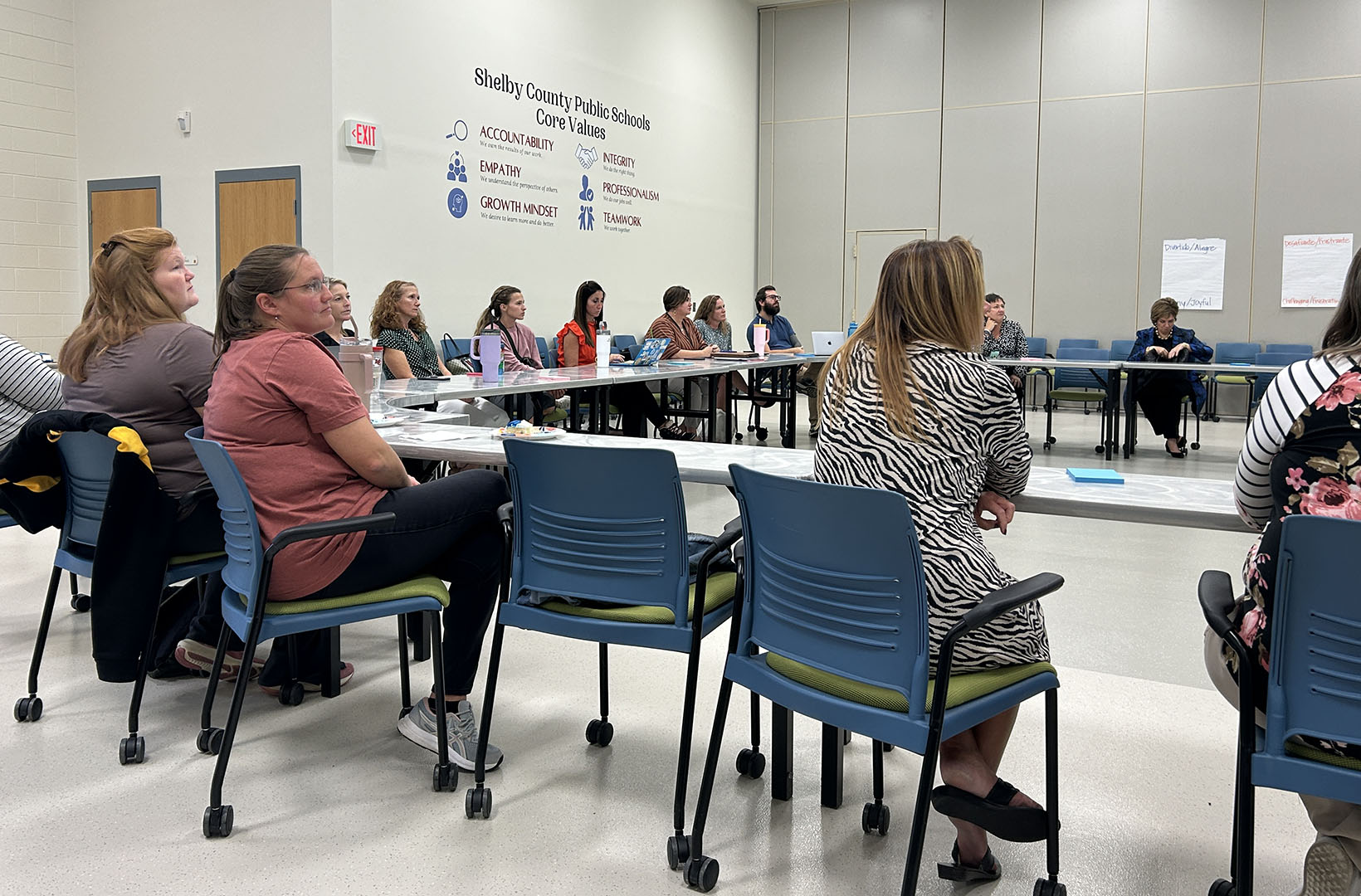By Lori Foster
lori.foster@oldham.kyschools.us
Global education is a common phrase used in education these days. It is composed of two words that are easy to understand, yet pinpointing a concise, clear definition of global education is not that simple.
Through my work as a Teachers for Global Classrooms fellow, I have come to believe global education can be a dimension that runs throughout the entire scope of student learning.
According to the World Studies Trust, “Global Education is a way of approaching everything we teach and how we teach it. It broadens horizons and encourages exploration of all subjects from a global perspective. It contributes to the whole curriculum and enhances our understanding of the world.”
Integrating global thinking into the classroom is not just a global day, an add-on, or an extra subject. By virtue of the fact that your students cannot take a global education class, the lens we create for all students in all classes should be a wide-angle lens to see not only local issues, but also global ones.
Although there is not one concise definition of global education, it is clear that inclusion of global themes in a student’s curriculum increases a student’s global competency. Global skills – such as flexibility, cooperative thinking, communication skills (preferably in more than one language), and productivity – are skills needed to navigate the world students will be working in and leading.
But global learning is not a set of standards or curriculum, it consists of skills that are built along a continuum, starting early in education and building throughout the middle and high school years. These skills – which come from dispositions and capacities – can be encouraged as students explore the world around them in all subject areas.
The disposition of a globally-competent student, as defined by the Asia Society, is the curiosity, creativity, inquisitiveness and empathy for the world around them. A globally-competent student has the capacity to investigate the world by asking the right kinds of questions, to recognize others’ perspectives and that their own perspectives may not be shared by the larger global community, to communicate their ideas with others in a collaborative setting, and to take action either individually or as a community. In short, our goal as teachers in the 21st century is to develop both a globally-competent disposition and the capacity to be globally competent in a globalized world.
Incorporate what you are passionate about. Your students will feed off the passion you bring to the subject. This is a great way to model the dispositions we want to develop in our students.
Maybe you love motorcycles, so you guide your mathematics class to look at the rate at which motorcycles are used around the world for transportation as compared to the U.S. Perhaps you are an avid knitter, so you lead your geography class to examine the different types of wools that come from various geographical regions and then compare the weaving traditions that emerged out of those areas. Or you might be a sports enthusiast, so you look at the traditional sports played around the world and what they represent in P.E. class. Your hobby can present an avenue for global learning in the classroom.
Avoid working by yourself. I know it is easier said than done. I know there isn’t time to collaborate on these projects, but just try to find one person to partner with, one person who overlaps with your content or your passion.
Global education – in the ideal world – should be interdisciplinary across the entire school, so try expanding your global lesson to another discipline if possible. Study your unit to find possible overlaps with another content, such as history, arts or humanities. Even teachers of subjects that don’t seem like an obvious fit may surprise you and could be your biggest ally.
The best approach is to have done some legwork for them so that you can provide them with the interdisciplinary curriculum or materials. Look for things that you can use in a variety of ways and in a variety of classes so the student can use the same materials in both classes.
Embrace Technology. Some of the most common technological and social platforms available can help you communicate or share ideas about upcoming projects, connect with experts in any field, communicate with other classes around the world and just keep in touch with other colleagues doing the same work.
Finding the time to spend on investigating new technologies, setting up new accounts and playing around with new apps is always a big challenge for me. So start with whatever platform you are the most comfortable with already and see if you can use it in some creative new way to encourage inquiry, perspective building, communication or action. I had been using Google Classroom just to post assignments or class notes, but this year I have had students produce and post videos there, post comments on their peers’ work and I have used it as an online class discussions board.
Turn to your local community for support and resources. Kentucky is more globalized than ever, meaning there is a greater opportunity to partner with local companies, organizations and nonprofits that transcend national borders. Look to these companies or groups that have an incentive to help shape a future generation of employees, volunteers and globally-minded citizens.
These partners can be found anywhere and in the most surprising locations. I am from a town of 800 people, and my uncle owns an earth-moving equipment company there that sells to customers on almost every continent on Earth. If I can find a global partner in tiny Pleasureville, they are where you are too!
Lori Foster is a Spanish teacher at Oldham County High School and a 2016 Teachers for Global Classrooms fellow.



Leave A Comment